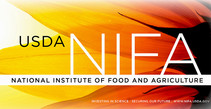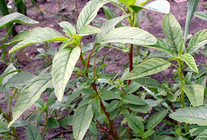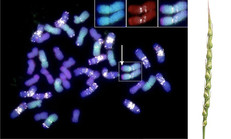
This week marks a pivotal point in our nation’s fight against a pandemic. It also exemplifies how science helped mankind’s triumph over a virus. In their recent book, two economists, Jonathan Gruber and Simon Johnson, argue that “almost every major innovation in this (post world-war II) era relied in an important way on federal government support.” These include internet, microwaves, and almost every component of the computers we use.
Coronavirus vaccine is no exception. The rapid development of vaccines against COVID-19 was possible because of long-standing federal investments in basic and applied research on viruses and biomedical sciences. These investments, combined with the ingenuity of entrepreneurial private sector, helped rapid development and commercialization.
For addressing major challenges in food and agriculture in the face of existential threats, such as environmental change at its tipping point, substantial investments in agricultural sciences are warranted. As we near the end of this most unusual year, I want to share with you some outstanding USDA-NIFA accomplishments for 2020. They exemplify how investing in agricultural research, extension and education have addressed current needs with speed, clarity and agility and explored transformative opportunities for the future with focus and scale needed. For more information about NIFA’s accomplishments, read the NIFA blog.
|
ASAP System Notice for Awardees
During the last four business days of each month, grantee access to the Automated Standard Application for Payments (ASAP) system is paused to allow time to reconcile NIFA’s accounts. With two federal holidays falling on consecutive Fridays, the December ASAP temporary suspension will extend from approximately 4 p.m. Central time on Wednesday, December 23, 2020 until 9 a.m. Central time, Monday, January 4, 2021. We expect the disruption will be minimal, since most universities and businesses are also closed during this time, but please plan accordingly. Please send any questions or concerns via email to ASAPCustomerService@usda.gov, and we will get back to you no later than the next business day.

The Science Behind Your Traditional Holiday Meal
Holidays are traditionally a time to focus on family, friends and food. This year, as Americans navigate this unprecedented holiday season, many are turning to the kitchen to cook up expressions of love and care. Throughout the year, USDA’s National Institute of Food and Agriculture (NIFA) funds research across the nation that puts safe, affordable, nutritious food on your table. Here are some examples of NIFA-funded projects that make up an all-American feast:
The United States leads the world in turkey production. In 2019, the U.S. produced 5.82 billion pounds of turkey meat, per USDA’s Economic Research Service. NIFA-supported researchers at West Virginia University are working to improve meat quality through better nutrition and management. The Hatch Act provides funds to support agricultural research at U.S. land-grant universities. Michigan State University researchers have a grant from NIFA’s Agriculture and Food Research Initiative to address thermal challenge and meat quality. For more information, read the NIFA blog.
Holiday meal. Photo courtesy of Getty Images.
|

USDA Announces 2021 Lincoln Leaders Fellowship Opportunities for Minority-Serving Education Institutions
USDA’s Office of Partnerships and Public Engagement recently announced they are accepting applications to the 2021 Lincoln Leaders Program, which includes fellowship opportunities to connect USDA resources with faculty and staff at Hispanic-Serving Institutions, 1994 Tribal Colleges, and Universities, and 1890 Land-Grant Universities. These fellowships connect participants to USDA and other federal resources that will enhance their professional knowledge. For more information, read the USDA press release.
|

NIFA Career Opportunities
We are hiring! Remember to check out NIFA's Career Opportunities webpage, where there is a direct link to all open positions. You can also explore NIFA jobs at the USAjobs.gov website. Current openings in Kansas City, Missouri:
Deputy Director, (ES 00)
Closing Date: 1/06/2021
|

Male Weeds May Hold Key to Their Own Demise
Scientists are getting closer to finding the genes for maleness in waterhemp and Palmer amaranth, two of the most troublesome agricultural weeds in the U.S. Finding the genes could enable new "genetic control" methods for the weeds, which, in many places, no longer respond to herbicides. "If we knew which genes control maleness and we could make those genes proliferate within the population, every plant in the field would be a male after a few generations, and theoretically, the population would crash," says Pat Tranel, professor and associate head in the Department of Crop Sciences at the University of Illinois and lead author on a study in New Phytologist. The project was supported by USDA’s National Institute of Food and Agriculture and the Max Planck Society. For more information, read the University of Illinois news article.
Young waterhemp plants, photo courtesy of Lauren D. Quinn.
|

Global Collaboration is Unlocking Wheat's Genetic Potential
Wheat breeders all over the world just gained a major new scientific resource. On November 25, Kansas State University researchers, in collaboration with the international 10+ Wheat Genomes Project led by the University of Saskatchewan, announced the complete genome sequencing of 15 wheat varieties representing breeding programs around the world, an invaluable resource to improve global wheat production. The work at Kansas State University was supported by the National Science Foundation, Kansas Wheat, the U.S. Agency for International Development, and USDA’s National Institute of Food and Agriculture. For more information, read the K-State news article.
At left, a chromosome segment from Aegilops ventricosa, highlighted by the white arrow. Image right is wild wheat relative Aegilops ventricosa. Image courtesy of Haley Ahlers
|

Upcoming RFA's
NIFA will be releasing several Request for Applications (RFA's) between now and December 23. Don’t forget to check your email or the NIFA website for Funding Opportunity Announcements you may have missed while away.
|
Minor Crop Pest Management Program Interregional Research Project #4
 Image of farmer spraying field, courtesy of Getty Images.
The Minor Crop Pest Management Program Interregional Research Project #4 (IR-4) enables the crop protection industry to provide safe, effective, and economical crop protection products for growers and consumers of minor/specialty crops. The crop protection industry cannot justify the costs associated with the research and development, registration, production, and marketing of crop protection products for minor/specialty crops due to the smaller market base and limited sales potential. The IR-4 program provides the assistance needed to ensure that new and more effective crop protection products are developed and made available to minor/specialty crop producers. These efforts require effective collaborations among federal agencies, the crop protection industry, and land-grant colleges and universities. For more information, read the IR-4 funding opportunity.
Biotechnology Risk Assessment Research Grants Program
 Image of scientist with mask looking through microscope; courtesy of Getty Images.
The purpose of the Biotechnology Risk Assessment Research Grants Program (BRAG) is to support the generation of new information that will assist Federal regulatory agencies in making science-based decisions about the effects of introducing into the environment genetically engineered organisms including plants, microorganisms — such as fungi, bacteria, and viruses — arthropods, fish, birds, mammals and other animals, excluding humans. Investigations of effects on both managed and natural environments are relevant. The BRAG program accomplishes its purpose by providing federal regulatory agencies with scientific information relevant to regulatory issues. For more information, read the BRAG funding opportunity.


Happy Holidays
NIFA Update will be going on holiday hiatus after this issue. We will return in the new year, on Jan. 6, 2021. Everyone at NIFA wishes you all the best holiday season ever and a productive year to come.
|
|